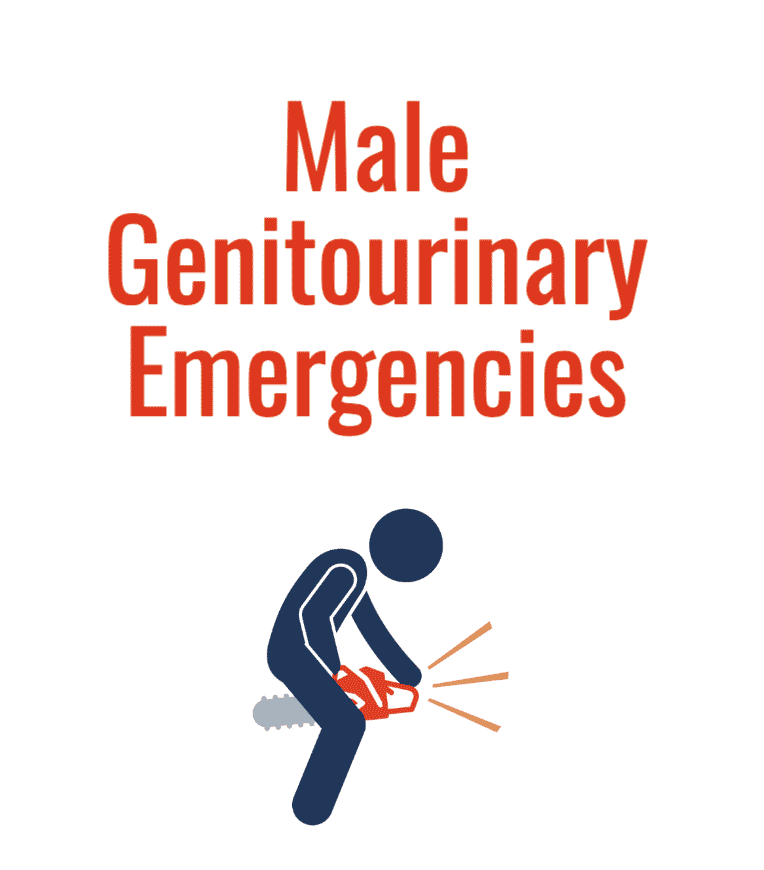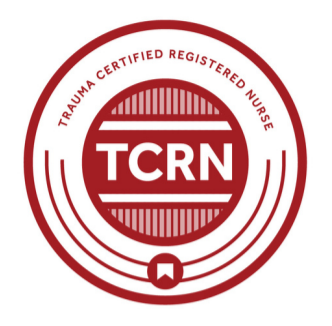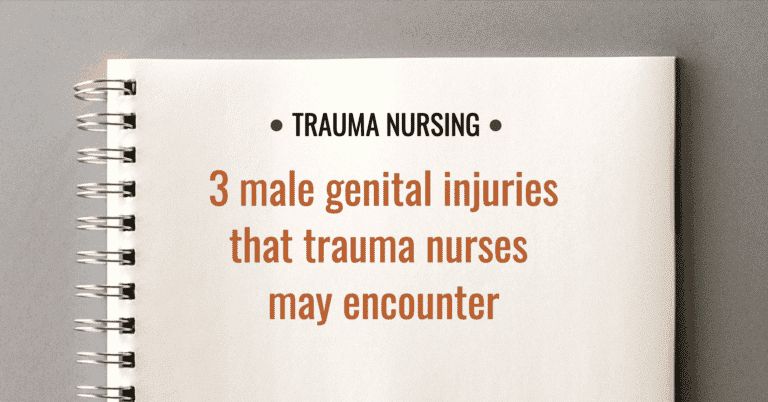Male genital trauma includes relatively common straddle injuries and penetrating injuries related to multisystem trauma. However, trauma nurses may encounter several other penile and testicular injuries that are seen less frequently.
It is vital that nurses perform a thorough assessment in order to recognize these potential injuries and intervene quickly. Following are three male genital injuries that trauma and emergency nurses should recognize and be ready to treat.
1. Penile fracture
A penile fracture occurs when the erect penis is forcefully bent, causing the corpus cavernosum to rupture. This injury is not life-threatening, but it can result in damage to the urethra and cause impotence.
Penile fracture typically occurs during sexual intercourse. The patient may report hearing a “pop” and experiencing pain and an abrupt loss of erection.
Nurses should assess the patient for pain, penile edema, penile deformity, bruising of the penile shaft, inability to urinate, and blood at the external opening of the urethra (the urinary meatus).
Penile fracture requires a urology consult, and nurses should prepare the patient for an operative intervention. Surgical repair of a penile fracture involves evacuation of any hematoma, suture of the tunica albuginea (the fibrous tissue that envelopes various penile structures) and ligation of any bleeding vasculature.
Note that urinary catheterization is contraindicated if there is any bleeding at the urinary meatus.
2. Zipper injury
While zipper injury is one of the most common causes of penile injury in adults, it rarely results in serious penile damage. However, more serious penile injury can occur when patients attempt to manage their condition at home rather than seeking professional medical attention.
The patients most at risk for zipper injury include males who are under 18 years old, who are uncircumcised or who require assistance getting dressed.
Nursing assessment findings for zipper injuries may include pain, swelling, bleeding, bruising and signs of tissue damage.
Interventions for zipper injury include pain management. Efforts to release the entrapped tissue may include:
- Using wire cutters to cut the median bar of the zipper
- Cutting the dentition of the zipper to permit unzipping from the other end
- Disengaging the fastener with a flat-head screwdriver
If less invasive methods fail, the patient may require an emergency circumcision.
3. Testicular torsion
Testicular torsion is a twisting of the spermatic cord, which results in decreased arterial blood flow to the testis. If not resolved quickly, testicular torsion can lead to infarction, atrophy and loss of the testis.
Testicular torsions often result from a congenital abnormality of the testicle that allows increased testicular mobility. Most cases occur in early adolescence, with two-thirds occurring between 12 and 18 years. About 50% of testicular torsions occur during sleep.
Assessment findings for testicular torsion include:
- Sudden onset of severe scrotal pain
- Nausea and/or vomiting
- Swollen, tender testis
- Absent cremasteric reflex (elevation of the testes when the inner thigh is lightly stroked)
- Absent Prehn’s sign (relief of pain when testes are elevated)
Patients with testicular torsion will likely require pain relief. Interventions for testicular torsion are aimed at restoring testicular perfusion and preventing further injury.
Operative intervention with detorsion and fixation (orchiopexy) is the definitive treatment for testicular torsion and must not be delayed. Testicular salvage rates are 90% to 100% if treated within 6 hours of onset, 50% if longer than 12 hours of onset, and 20% if beyond 24 hours of onset.



